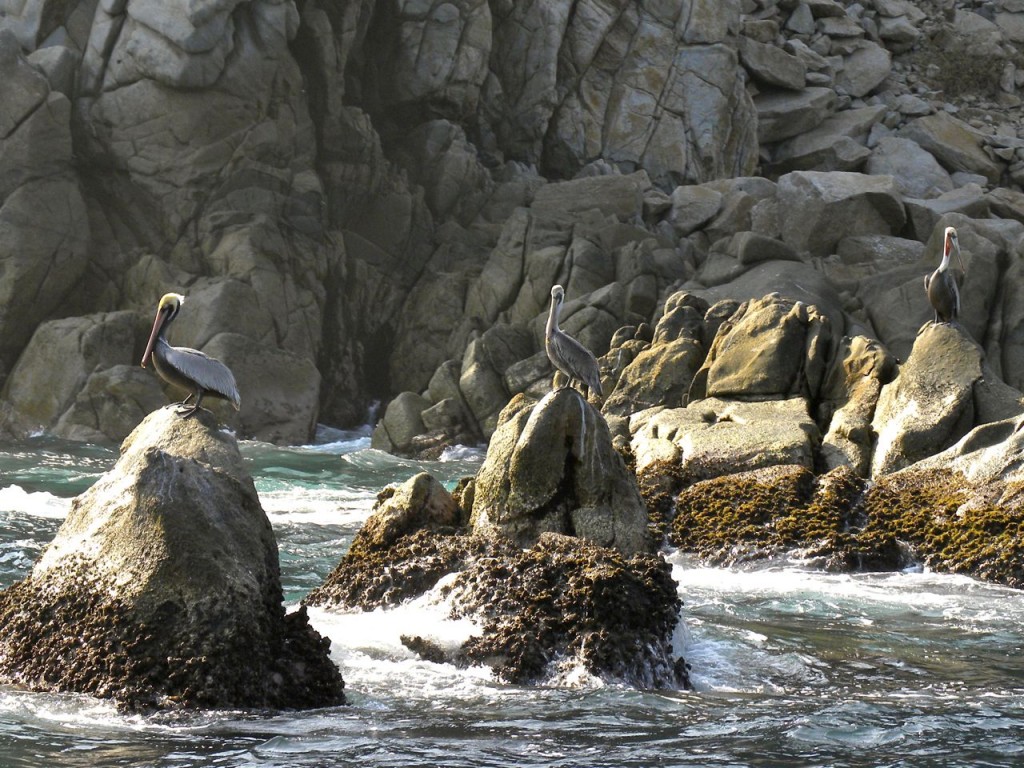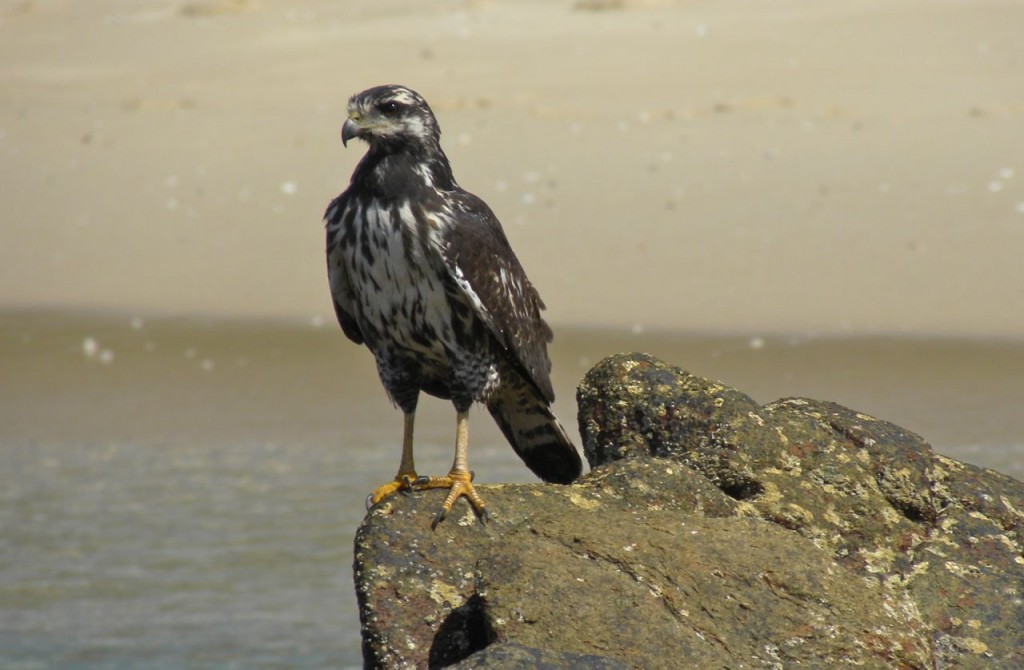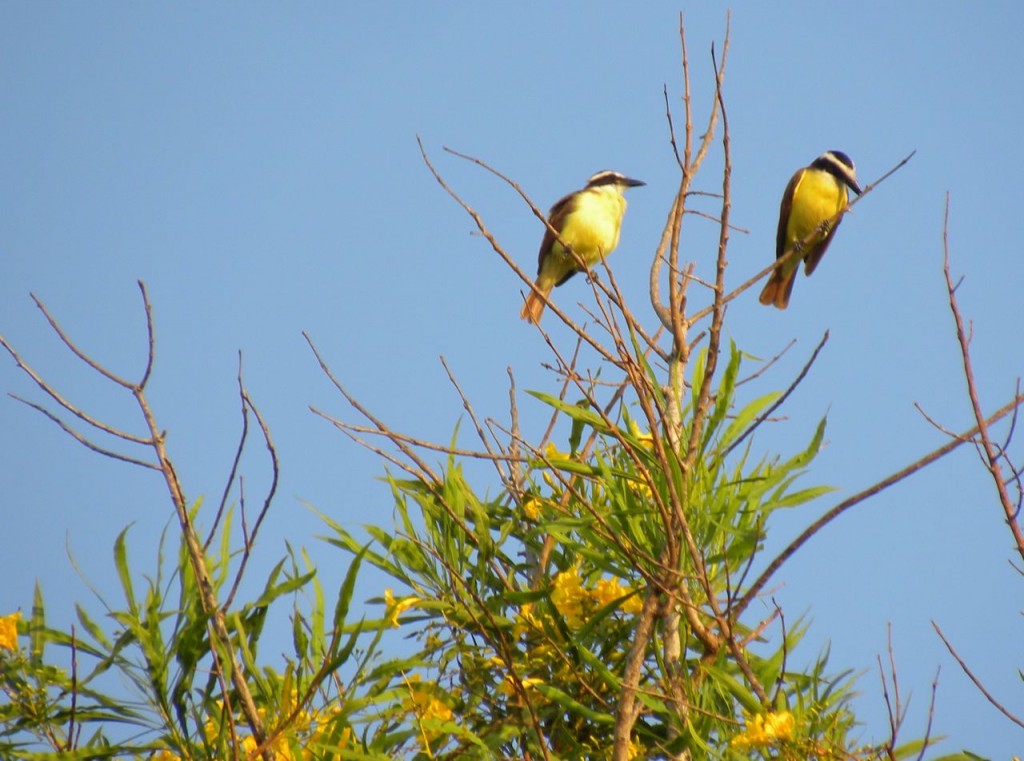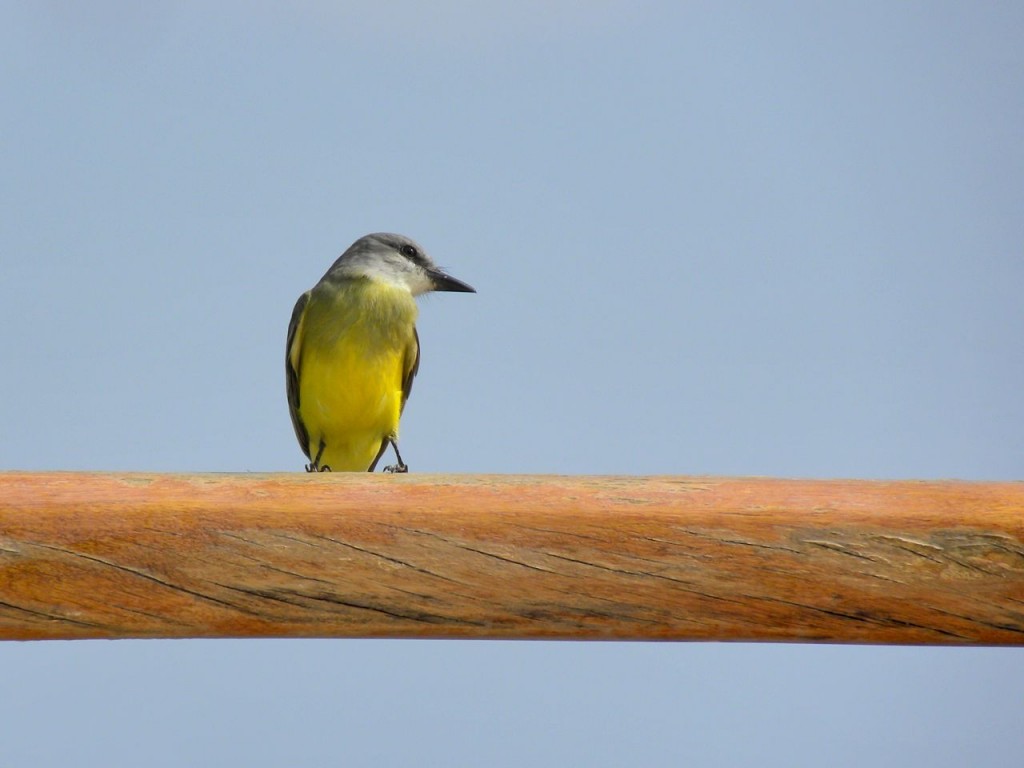January 16 2013. There’s something really unnatural about being propelled from a cold climate to a tropical one all in the space of a handful of hours. Our Ontario day dawned with snow flurries but by lunchtime we were shedding overweight clothes. My winter-dry skin was saying thank you and suddenly there were birds, lots of birds.
We are in Huatalco, a smallish resort on the Pacific coast of Mexico. We are about to set off to explore the ancient and traditional practices and techniques of weaving and dyeing; 8 or 9 days off the beaten tracks with no promises made about comfort or escape from Travellers’ Diarrhoea!
These last 24 hours have produced many new-to-me birds including a few that I had absolutely no expectation of seeing. This afternoon we were on a boat about a kilometer offshore, we’d been to observe the ancient Mixtec practice of extracting a royal-purple dye from the foot of an inter-tidal zone mollusk, and as we made our way home I watched a Peregrine Falcon storm across the wave-tops and seize a Red-necked phalarope which had hitherto been innocently bobbing the waves with its pals. Magnificent Frigate Birds, an Osprey or two, Black Vultures and even a Common Black Hawk hung around the shore. There were Brown Pelicans sitting patiently on the rocks and occaisionally taking a plunge in pursuit of a meal.


Somehow though the Bird of the Day came just after we’d settled in to our hotel room. I looked out of our window and saw a large flycatcher-like bird atop a dead tree. My first shoot-from-the-hip impression was that it was Great Kiskadee, but I was wrong (it would come later.) A careful examination through my field guides told me I was looking at a Tropical Kingbird which has all the presence and air of ownership that that we commonly see in our more familiar Eastern Kingbird, but its beautiful sulphur yellow breast sets it apart. It turns out that about five Tropical Kingbirds spend quite a bit of time on this perch together with a small group of Rufous–backed Thrushes (very much like an American Robin) and a family of Golden–fronted Woodpeckers.
There are many birds too that I see and fail to identify, or at best can only place it in a family: an oriole, a tanager and so on. It hardly matters though, it’s an embarrassment of avian riches as it is.


I think the hardest part about birding in the tropics isn’t identifying the bird – it’s finding the page it’s on before the damned thing flies away.
Peter,
Love the Great Kiskadee and the Tropical KIng bird. You must try and see a Chachalaca they are funny guys as they lope along branches. They are well camouflaged in the trees but once you find a group usually two or three you can stand quietly and view them very easily. Also the Ferruginous pygmy-owl is a real delight.